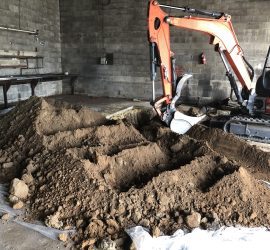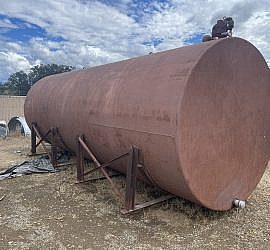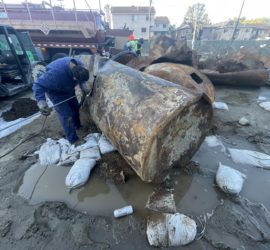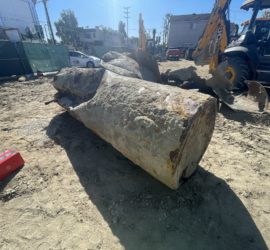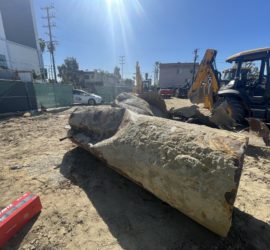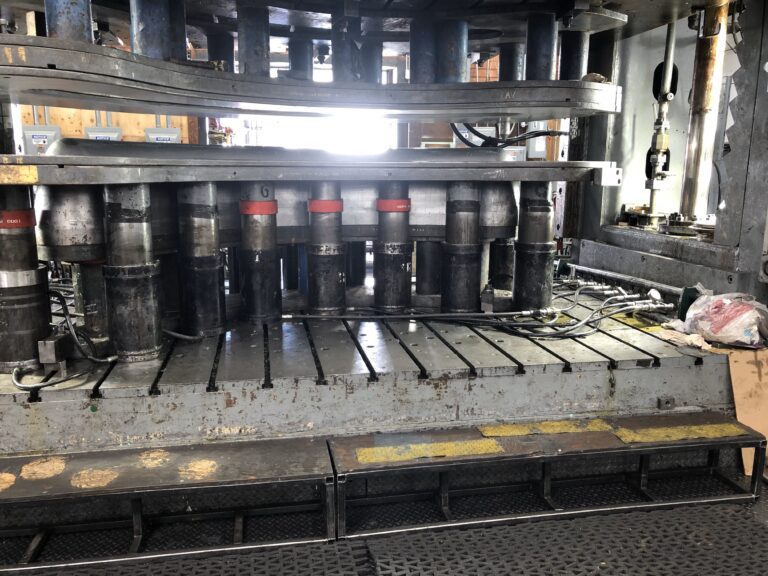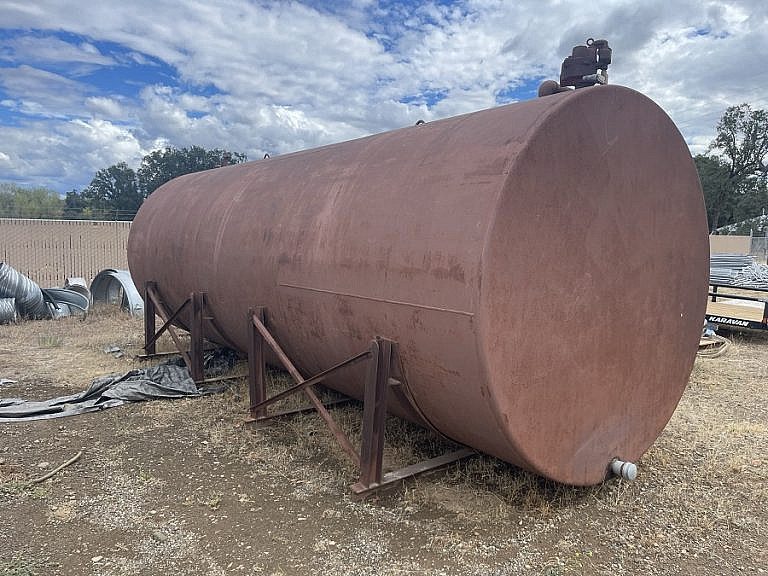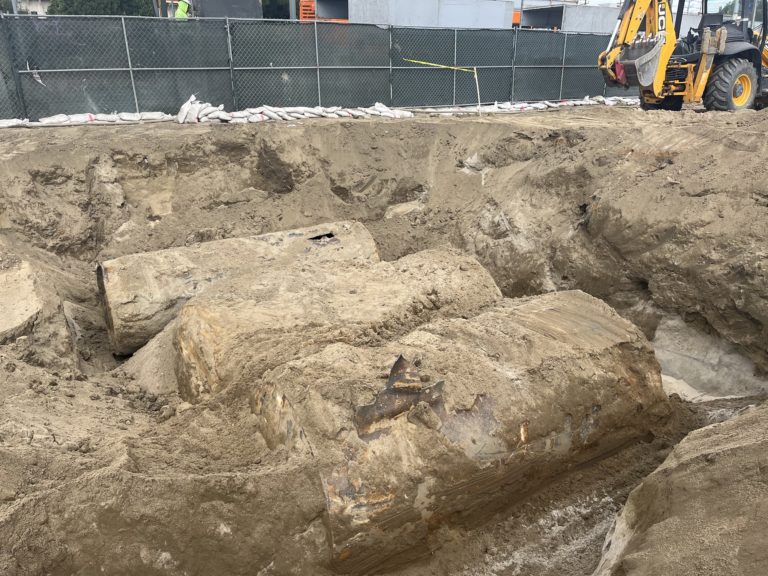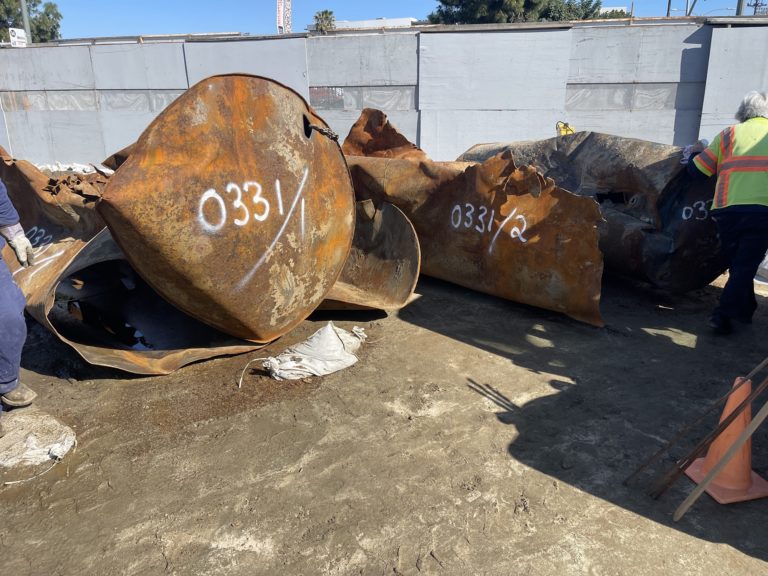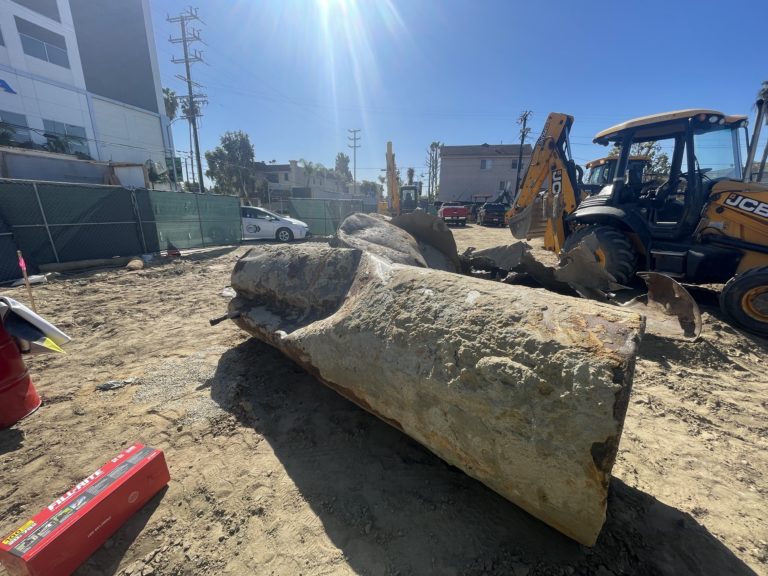Underground Hydraulic Lift Removal
The underground hydraulic lift removal process entails excavating lift system hoists and corresponding storage tanks and remediating the contamination to maintain environmental compliance. A hydraulic lift removal contractor starts by obtaining multiple permits and coordinating EPA waste profiles for legal transport and disposal. Afterward, the remediation contractor works with a geologist to ensure proper lateral support during excavation. Moreover, an environmental professional observes the excavation process and performs soil contamination testing under regulatory agency oversight. Lastly, a remedial action plan is followed to clean up the contamination, before backfilling occurs. Updated April 17, 2024.
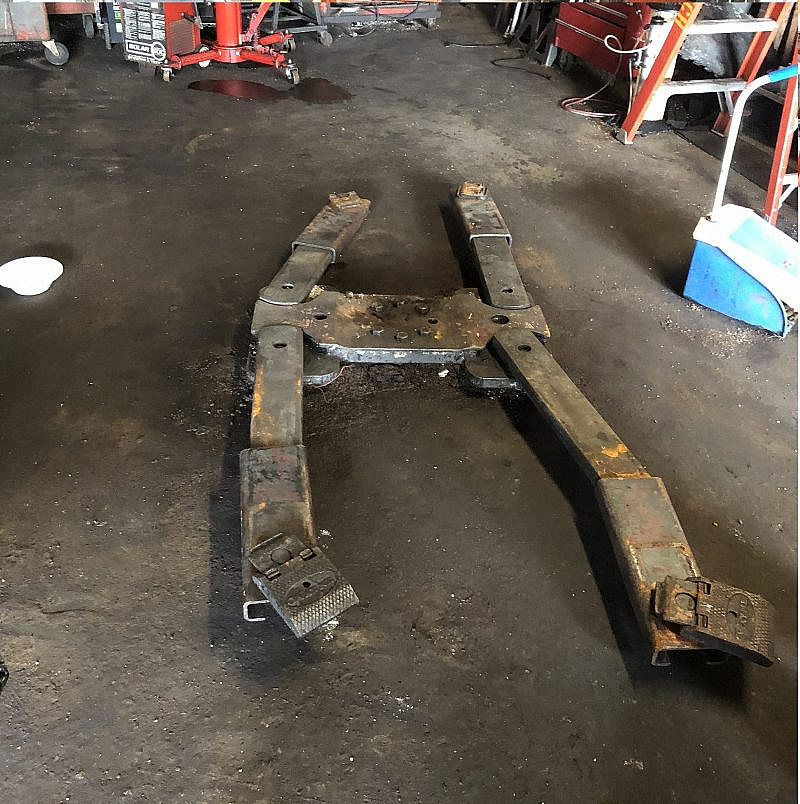
Hydraulic Lift Excavation Permits
In-ground hydraulic lift removal typically requires various permits. For instance, grading and excavation permits ensure regulatory oversight of lateral support. This enforces the preservation of building foundations and roads within proximity to the hydraulic lift. Environmental permits confirm the removal of soil and groundwater contamination. Automobile lift removal permits also require special licenses and certifications in geology, construction, hazardous waste disposal, and soil contamination cleanup. Moreover, additional certifications such as heavy equipment operation, OSHA HAZWOPER, and more must be in place for project approval.
Hazardous Waste Disposal Licenses & Transportation Manifests
Underground hydraulic lift removal contractors are generators and handlers of hazardous waste. This includes liquid hydraulic fluid containing oil-range petroleum hydrocarbons (TPH-o), polychlorinated biphenyls (PCBs), and various volatile organic compounds (VOCs). As a result, these companies operate with a permanent EPA Hazardous Waste Identification Number, and maintain updated waste disposal licenses and transportation manifests at all times.
In some cases, information from a Phase 1 Environmental Site Assessment can assist with the permit applications and hazardous waste profile process. For instance, the Phase 1 Environmental process uncovers certifiable information about chemicals of concern and historical disposal records. Similarly, a Phase 2 Environmental Site Assessment might be of use in generating an EPA waste profile. However, to be of use, the Phase 2 ESA analytical data cannot exceed expiration dates and must meet the minimum data qualifiers for State and Federal regulation.
Underground Utility Survey via Ground Penetrating Radar
A geophysical survey is necessary to identify and prevent damage to underground utilities before excavation. A comprehensive scan of the subject property can also determine whether other subsurface features (such as an underground storage tank) exist on-site. Lastly, ground penetrating radar can provide important information about the slab such as thickness and reinforcement.
Hydraulic System Disconnection & Hydraulic Fluid Evacuation
There are different types of underground hydraulic lift systems. For instance, some contain a hydraulic fluid reservoir within the cylinder. Whereas others have a detached underground storage tank (UST). A certified technician must decommission and disengage the hydraulic system, and follow procedures to prevent spillage and contamination. And any remaining hydraulic fluid is subject to extraction via a vacuum tank truck. All hazardous waste disposal must be in accordance with environmental laws and policies.
Pavement Cutting
The concrete footings and slab areas need to be carefully dissected prior to the underground hydraulic lift removal. It is crucial that a structural engineer evaluate the integrity of a foundation ahead of time. And the engineer must certify the proper methods and location of saw-cutting for the preservation of structural integrity. Moreover, geophysical survey data produces existing rebar and post-tension specifications. Reinforcement specifications must be considered prior to concrete cutting. And a proper re-build of the reinforcement system is mandatory.
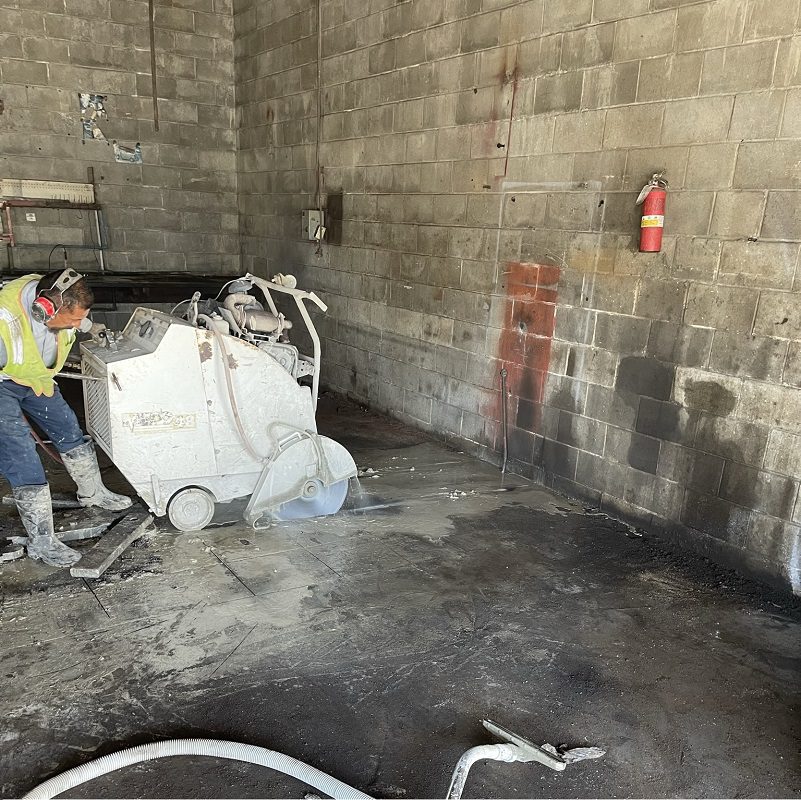
Lateral Support
Lateral support is a typical requirement for deeper excavations within the proximity of roads, walls, or building foundations. Excavation support systems keep the sides of the excavation stable and protect nearby structures. It also ensures the safety of workers. An engineering geologist prepares lateral support calculations and designs. And excavation contractors obtain the permits. In fact, even the smallest form of hydraulic lift excavation may require lateral support from regulatory agencies.
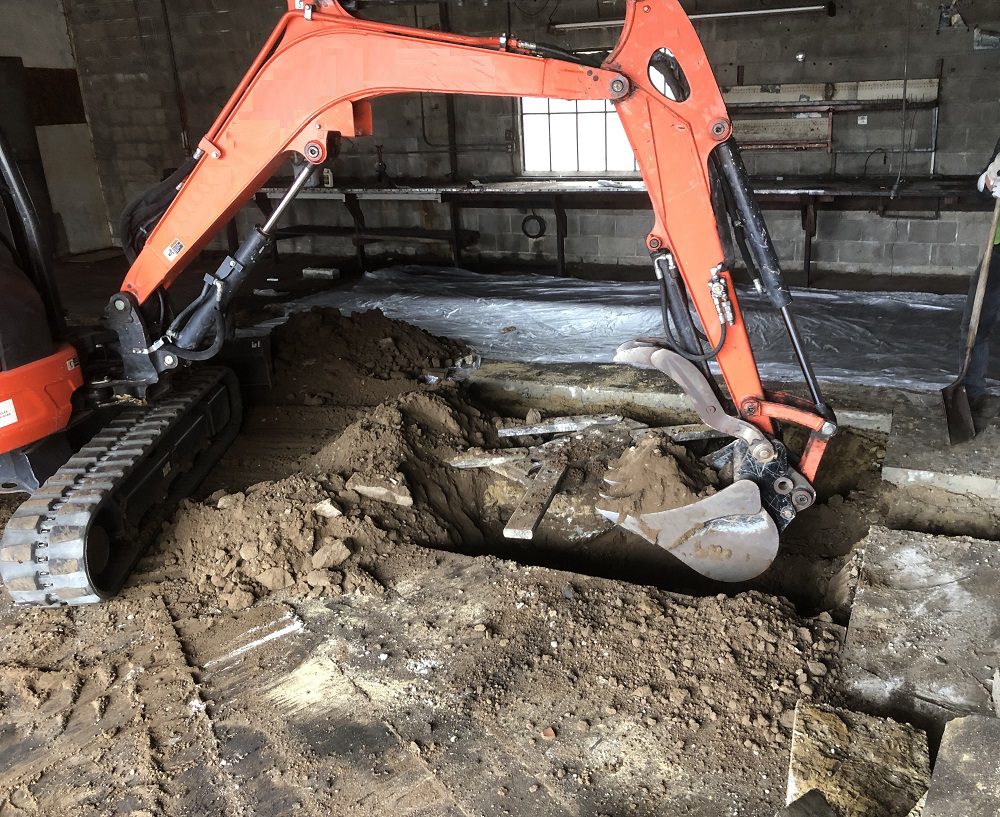
Excavation for Underground Hydraulic Lift Removal
Hydraulic lift removal contractors use machinery to excavate. Special compliance training and hazmat certifications are necessary to qualify for permits. Environmental professionals direct the stockpiling of soil contamination for disposal purposes. Similarly, they monitor soil vapor and soil quality for AQMD Rule 1166 permit compliance. Geologists oversee the lateral support, backfill compaction certification, confirmation of soil analysis, and enforce the soil management plan.
The contractor and engineer also strategize for proper weight distribution for hoist-pulling. After excavation, operators mobilize a crane and linkage system (with proper weight rating and threshold) for the underground hydraulic lift removal. The crane operator also mounts the hoist on the appropriate freighliner for transportation off-site.
Hydraulic Lift Piston Cleaning & Transportation
All parts of the underground hydraulic hoist system must be clean (with certification by a toxicologist) before transporting off-site. This entails high-pressure rinsing and extraction of fluids via a vacuum tanker. At a minimum, the cleaning procedure requires EPA waste profile documentation, hazardous waste transportation manifests, laboratory analytical data, and other special handler licenses.
Contaminated Soil Remediation
Prior to completion, environmental professionals and professional geologists perform soil contamination testing. Numerous samples are collected from different locations within the pit, as per ASTM guidelines, industry standards, and the local permitting agency. Moreover, analysis typically comprises the contaminants of concern, such as total petroleum hydrocarbons (TPH), volatile organic compounds (VOCs), semi-volatile organic compounds (SVOCs), and polychlorinated biphenyls (PCBs). If contamination is apparent, soil contamination remediation is necessary.
Certified Clean Backfill Material & Compaction
The responsible geologist of record will select the appropriate backfill material, in accordance with the local grading department and building department approval. In accordance with industry standards and International Building Code (IBC) backfilling methodologies, backfill material applications occur in minimum-thickness lifts and are manually compacted. A field geotechnical engineer continuously performs field soil compaction and density tests to certify optimal relative compaction. Proper compaction is measurable and reportable to the local building department. Its purpose is to prevent the settling or subsidence of the ground surface, after backfilling.

